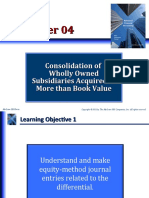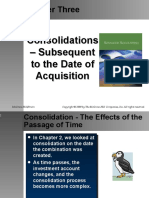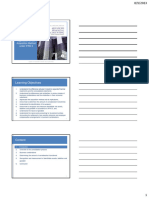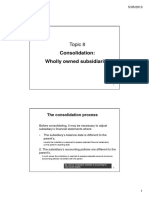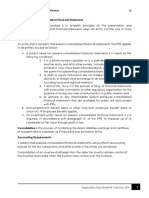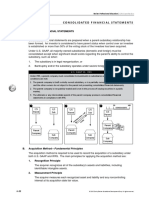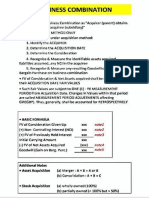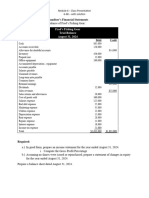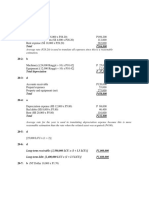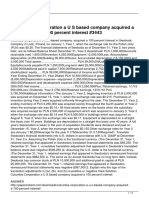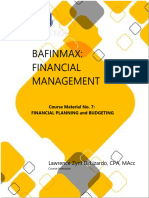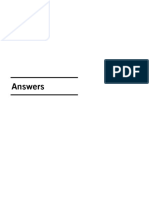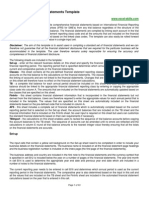0% found this document useful (0 votes)
50 views40 pagesLecture 4-Post
The document summarizes the consolidation process which involves:
1) Combining the parent and subsidiaries' financial statements and making adjustments to eliminate intra-group transactions and balances.
2) Adjusting subsidiary assets and liabilities to fair value through business combination valuation entries.
3) Eliminating the parent's investment in subsidiaries against the pre-acquisition equity to avoid double counting.
An illustration is provided where the parent company acquires a 100% interest in a subsidiary, requiring adjustments such as increasing assets for recognized intangibles, deferred tax liability, and calculating goodwill as the excess of consideration over fair value of identifiable net assets.
Uploaded by
coolirlbbCopyright
© © All Rights Reserved
We take content rights seriously. If you suspect this is your content, claim it here.
Available Formats
Download as PDF, TXT or read online on Scribd
0% found this document useful (0 votes)
50 views40 pagesLecture 4-Post
The document summarizes the consolidation process which involves:
1) Combining the parent and subsidiaries' financial statements and making adjustments to eliminate intra-group transactions and balances.
2) Adjusting subsidiary assets and liabilities to fair value through business combination valuation entries.
3) Eliminating the parent's investment in subsidiaries against the pre-acquisition equity to avoid double counting.
An illustration is provided where the parent company acquires a 100% interest in a subsidiary, requiring adjustments such as increasing assets for recognized intangibles, deferred tax liability, and calculating goodwill as the excess of consideration over fair value of identifiable net assets.
Uploaded by
coolirlbbCopyright
© © All Rights Reserved
We take content rights seriously. If you suspect this is your content, claim it here.
Available Formats
Download as PDF, TXT or read online on Scribd
/ 40



